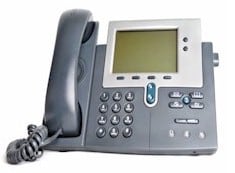In a rapidly evolving telecommunications landscape, Direct Inward Dialing (DID) remains a service of interest despite its longstanding history. Offered by local exchange carriers to corporate clients, DID allows external callers to directly dial specific extensions within a company’s Private Branch Exchange (PBX) system, bypassing the need for a human operator.
In this article, we will explore the mechanics of DID, its historical significance, its advantages and disadvantages, and why it retains relevance in an age of modern, digital communication systems.
Jump to:
- What is Direct Inward Dialing (DID)?
- How Direct Inward Dialing Works
- Advantages and Disadvantages of DID
- Modern Adaptations of DID
- The Continued Relevance of DID
- Conclusion
- References
1. What is Direct Inward Dialing (DID)?
Direct Inward Dialing is a telecommunication service that allows external callers to dial directly into specific extensions within a company’s PBX system. Prior to the advent of DID, reaching an individual in a large organization often required going through a switchboard operator, a process that was not only time-consuming but also prone to human error.

Historical Overview
Developed and popularized in the latter part of the 20th century, DID was a groundbreaking solution to the bottlenecks caused by manual switchboards. It allowed for a more streamlined communication process within large corporations and institutions, thereby improving operational efficiency.
Direct Inward Dialing, aka DID, is a service provided by a local exchange carrier (LEC) to a corporate client. Direct inward dialing (DID) uses a Private Branch Exchange (PBX) that allows outside callers to directly dial individuals within the company.
2. How Direct Inward Dialing Works
The Local Exchange Carrier (LEC) allocates a block of phone numbers to the company, usually differing only in the last two, three, or four digits. For example, a company with 50 employees who each need a separate phone number could be assigned the numbers 555-1201 through 555-1250. Outside callers could dial the employees directly using these numbers, which are routed through perhaps only eight trunk lines that service the PBX, supporting a maximum of eight simultaneous calls. Inbound calls are routed by the PBX to the appropriate extension.
When an external call comes in, the LEC routes it directly to the mapped extension, thus eliminating the need for an operator or a central receptionist.
Integration with PBX Systems
DID necessitates a close-knit integration with a company’s PBX system. This ensures that calls are correctly mapped to individual extensions, and that features such as voicemail, call forwarding, and call recording can be seamlessly implemented.
3. Advantages and Disadvantages of DID
Efficiency and Scalability
One of the major selling points of DID is the boost in efficiency it offers. By eliminating the need for a central switchboard or operator, calls are routed more quickly, leading to improved customer satisfaction and potentially, increased business. Moreover, as a company grows, additional numbers can easily be added to the existing DID system, making it a scalable solution.
Potential Drawbacks
Despite its advantages, DID is not without its shortcomings. For one, it can be an expensive service to set up and maintain, particularly for smaller businesses. Furthermore, a poorly configured DID system can lead to call routing errors, leading to potential customer dissatisfaction.
4. Modern Adaptations of DID
VoIP and Digital Transition
Voice over Internet Protocol (VoIP) has been a game-changer in telecommunications, and DID systems have adapted to stay relevant. Modern DID services often leverage VoIP technology to offer more flexible and cost-effective solutions.
Compatibility with Unified Communications
The digital transition has also meant that DID must be compatible with a range of other communication tools—like instant messaging, video conferencing, and file sharing. This has led to DID’s integration into broader unified communications platforms.
5. The Continued Relevance of DID
Case Studies
Despite the advent of more modern communication methods, several large corporations and institutions continue to use DID, citing its reliability and efficiency. Some have even blended it with VoIP and unified communications to create a hybrid model.
Future Outlook
The future of DID looks promising, especially with advancements in VoIP technology and its integration into unified communications platforms. As more companies opt for flexible and integrated communication solutions, DID is expected to evolve and remain a relevant player in the field.
6. Conclusion: The Lasting Impact of Direct Inward Dialing
Modern versions of Direct Inward Dialing technology don’t usually go by a different name. Rather, they are often identified as DID services but with additional qualifiers like “VoIP-based,” “SIP-based,” or “cloud-enabled” to indicate that they are more advanced or have additional features compared to traditional DID. In fact, these modern DID services often incorporate Voice over Internet Protocol (VoIP) technology and may be integrated into broader unified communications systems.
In sum, from revolutionizing corporate communications to adapting to modern digital transformations, DID has proven its staying power. As we look forward, the technology will likely continue to adapt, providing companies with efficient and integrated solutions for years to come.
7. References
- Books:
- “Telecommunications Essentials” by Lillian Goleniewski
- “Voice over IP Fundamentals” by Jonathan Davidson, James Peters
- RFCs:
- Websites: